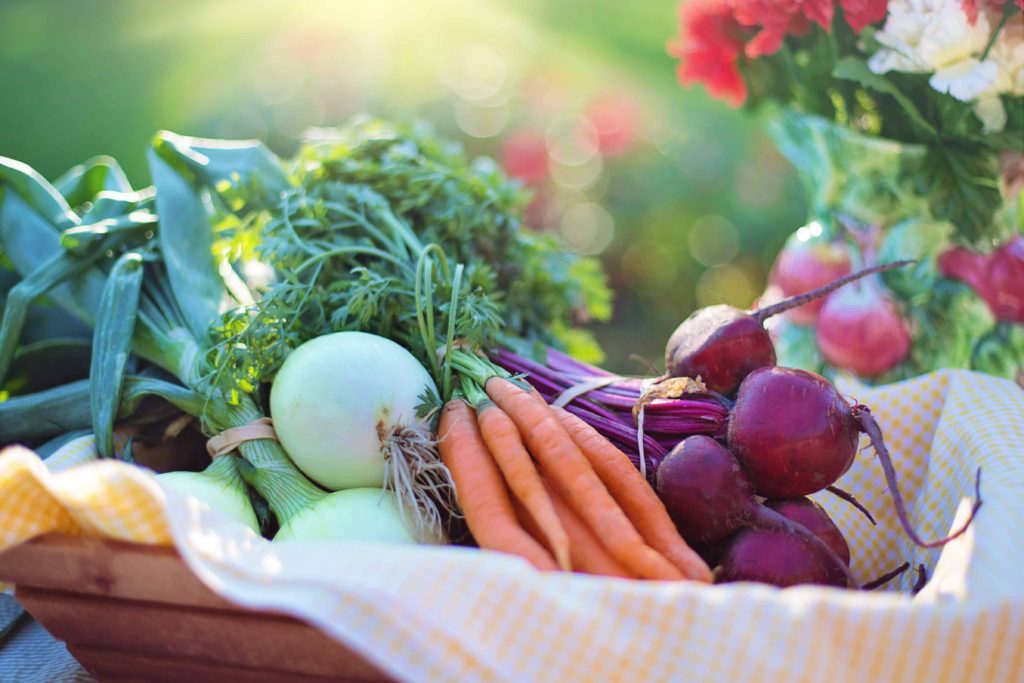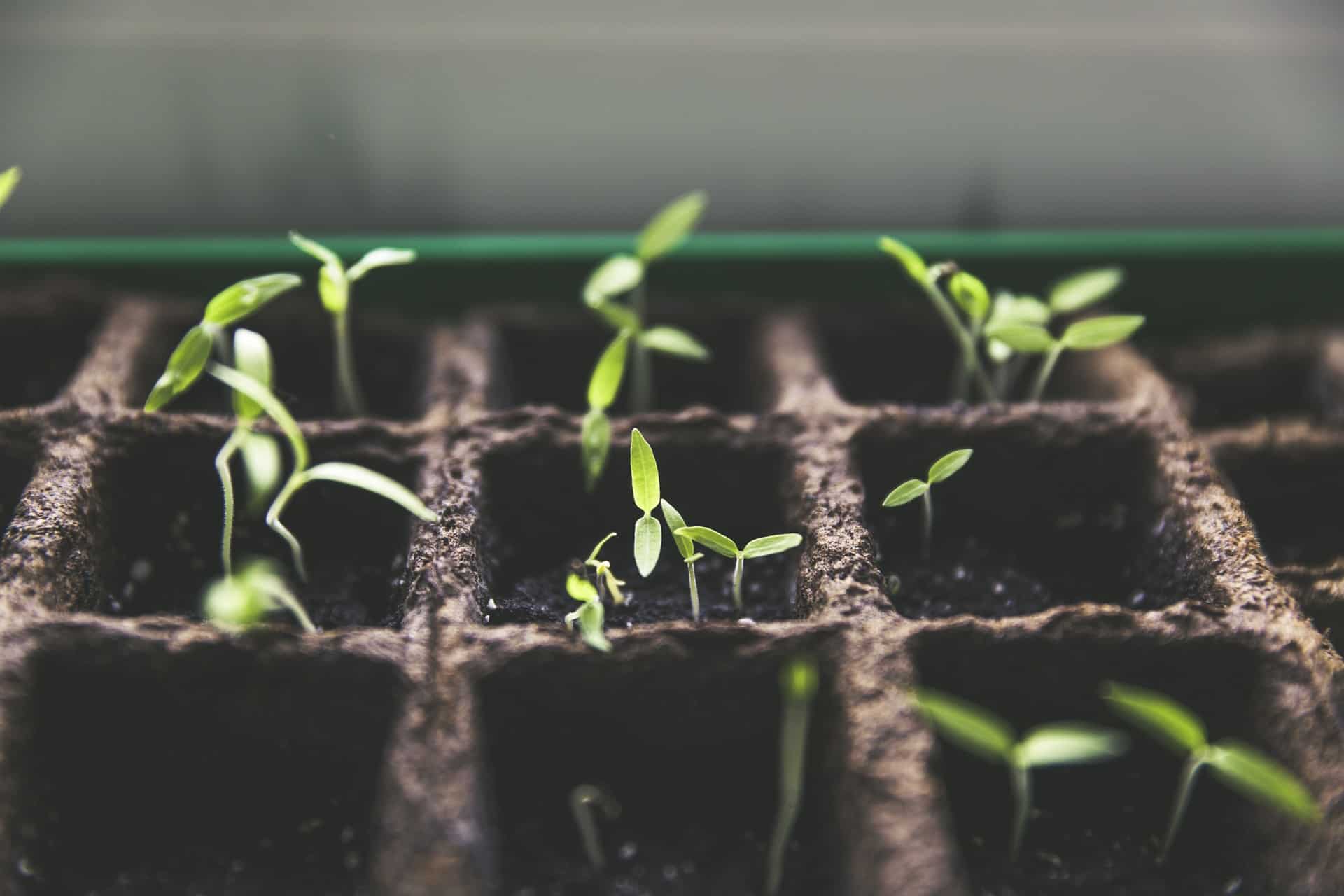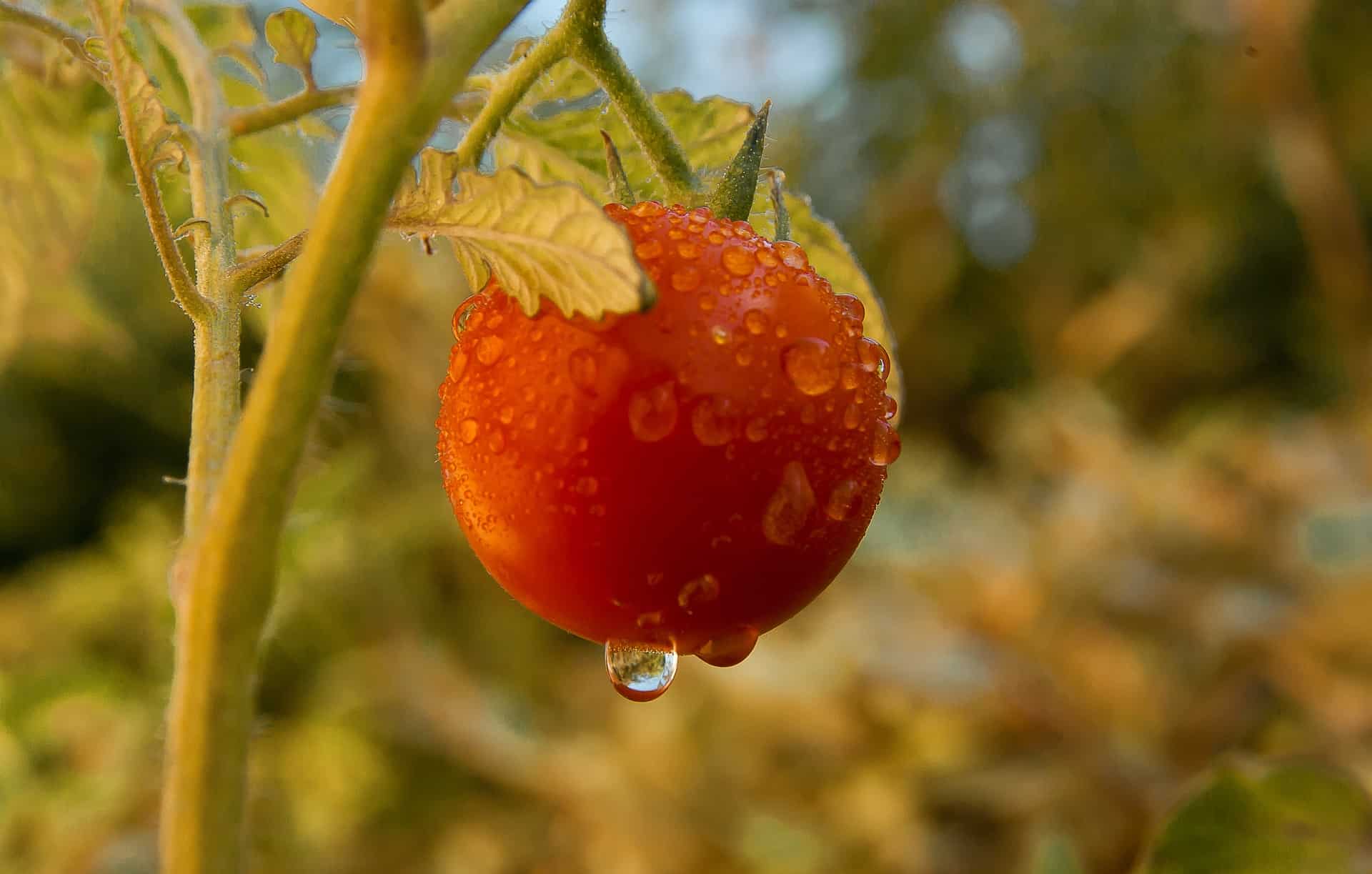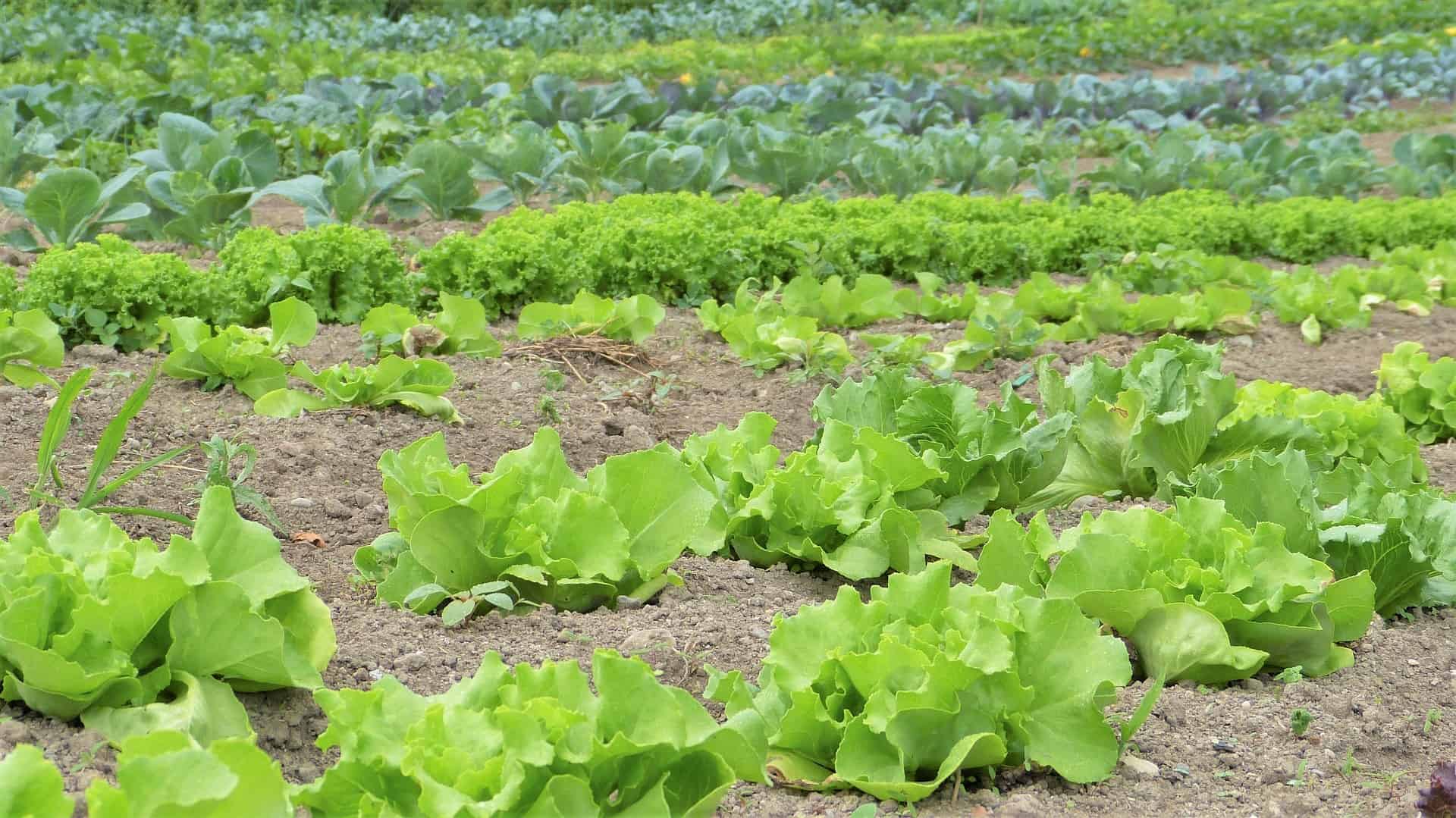This post may contain affiliate links. Please read our disclosures for more information.

Raise your hand if you’ve got a backyard vegetable garden!
(Raise your hand again if you’re far too good at forgetting to keep up on it and it tends to fall victim to disaster because it’s neglected! …both of mine are up…)
The only year we HAVEN’T had a garden to tend to was the year that the hubs had cancer so, with his treatments and the extra work it put on me, I just didn’t really have the time. Even with knowing all the good gardening tips, it wouldn’t have made a difference in my time available. Sigh. All that I managed to get planted were a few seed rows…which the birds ate. Ugh.
Growing up, I helped my parents with their garden. My sister and I were always tasked with weeding and harvesting as OUR summer responsibility every year for as long as I can remember. And every summer we’d spend at least a couple weeks with our grandparents, where my grandfather grows one of the most impressive vegetable gardens I’ve ever seen.
If there was ever someone to learn vegetable gardening tips from, it’s from the guy who grows 4-pound or larger tomatoes like it’s nothing. And then laughs and says the 3-pounders are “small.” His green thumb still seems to get more and more green, every year.
Someday, I’ll be as good as he is. It’s in my blood and it’s in my upbringing. In our family, gardening is life!
For now, the life of a stay-at-home/work-at-home mom with two little kids doesn’t exactly lend itself to having the garden as my first focus each day.
So, what can I do about it? How can I make my task of gardening both easier, and take less time?
Table of Contents
Vegetable Gardening Tips & Tricks
I want to save myself time and effort so that I can better take advantage of growing my own food, not just to save money but for the health benefits of organic produce, gardening as exercise, and the mental health boost of just being out in the dirt, in nature.
Here are my six top gardening tips to get you a well-planned vegetable garden and season, start to finish!
1. Start with the best plants for your area/climate – from seed, if possible.
There are a ton of ways to get your annual veggie garden started. I prefer to start all my plants from seeds, so I know exactly what soil they’ve been in, and what products and fertilizers have been used on them.
If you lack either the time or the skills/resources to start from seed, then there’s no shame in buying plants from a garden center. I’ve done it! Depending on where you can buy your plants from, I always recommend getting plants that can be considered organic — meaning the company that started those little seeds did so following organic methods. No synthetic pesticides or fertilizers, at the very least.
But do you know what’s even better than buying from a chain retailer, like Home Depot or Walmart?
Buying local.
Here are the two biggest reasons why: first, a small, local garden center cares A LOT more about whether a plant lives or dies, in addition to the quality of that plant, than your average teenager making minimum wage at Home Depot, tasked with holding a hose to water the sometimes already wilted and dying plants. Second, while you may be able to get some “exotic” varieties of veggies from some garden centers, most are well-stocked with plants that will actually do well in your climate, instead of varieties that do generically well across the country. A better fit = a better yield.
Amy, over at Garden Slacker, summed up all of that (and more)!
2. SUPPORT YOUR PLANTS AS THEY GROW.
Most of the veggies I plant need support, both emotional and physical. (Just kidding…sort of.)
As far as physical support goes, simple stakes and teepees are by far my favorite method for most of my veggies. But why?
There are a ton of other ways to make plant supports — cages, flat vertical frames with a meshwork, A-frame “teepees,” the string method, supported nets, etc. The list goes on and on to match your creativity.
My problem with most of these other methods is the time investment (tools and construction required for A-frames, vertical frames, nets, and the string method) or lack of stability (cages).
Individual stakes for tomato plants are about as easy as it gets, in my opinion. Plant your tomato plant in your garden, and then hammer in a deep stake (wood, fiberglass, some metals are ok too). As the plant grows, tie some jute twine or use plant wire (I LOVE this stuff!) to support the main stalk. Simple as that! Plus, having the plant itself under control makes harvesting a breeze!
Teepees are great for just about every other climbing plant. The best part is how cheap and easy they are to make! I collected big fallen branches from our backyard after the winter and a mid-spring windstorm to get enough for this year’s garden (in fact, I think I have too many). Who doesn’t love free stuff?! All I need is twine and scissors and I’m good to make some!
My favorite gardener’s resource site has a great little article on making teepees! And if you make it just right, you can collapse the teepee to reuse the following year. That’s a big win in my book!
If you don’t have access to fallen branches, you can buy bamboo stakes for a reasonable price and use those instead. (We’ve used these stakes in the past, but I’d recommend using two stakes tied together as one for heavier plants such as cucumbers or zucchini if you’re trying to grow them vertically, or tomatoes if you’re growing heavy varieties. They’d be perfect for lighter plants like beans and peas. They’re also easy to cut to your preferred length!)
If you’re feeling really creative, why not consider building a DIY garden fence that can double as plant support? Whether you choose pallets, split rail, or simple chicken wire stapled to stakes, you can find a way to modify almost ANY fence to do the job.
3. Prune your plants as needed.
Some veggies are like the crock-pot of the garden — you can basically set it and forget it until it’s time to harvest! Things like radishes, carrots, lettuce, and onions don’t take much actual hands-on care to produce a great crop. Simply plant and thin in a week or two if needed, and you’re all set!
But some veggies, like the infamous tomato, are often thought to be easy to tend to (which they are). They’re hard to kill once planted because they grow roots so much more readily than any other plant. They can collect water more easily because of it — those hairs along a tomato plant stem? They’re above-ground root hairs!
Contrary to popular belief, however, putting a tomato plant in the ground and a cage around it is not all it takes to have a great harvest, but it will likely get you a decent harvest.
To truly maximize your production output, your tomatoes will need pruning (another reason tomato cages are a nuisance – it’s makes it harder to reach into the plant)! Why have your plant waste effort and resources on more branches and leaves, when it could use that energy for making more fruits?!
This article about pruning tomatoes is just excellent, and it even explains more about using stakes for your tomatoes. I mean, if you’ve got your hands in there to prune regularly, it’s only an extra few seconds to tie the stem to the stake. Alternatively, strategically tying back the stem can help you better see and reach the parts that need pruning!
Always make sure your pruning shears are nice and sharp, to minimize the peripheral damage to the cut! (I love my gardening shears; despite being left in the rain or dirt countless times they are still so sharp and move so smoothly!)
4. WATER YOUR PLANTS THE WAY THEY NEED IT, NOT WHAT’S BEST FOR YOU.
A lot of people make the big mistake of thinking that when it comes time to water, they can just stand there with a hose spraying back and forth until everything looks wet enough, or set up a sprinkler so they can go sit down.
That’s got a LOT of flaws to it. Sure, greenhouses and garden centers do it. But they don’t have slugs with their plants lifted off the ground, and their plants aren’t going to droop their leaves onto soil that’s potentially riddled with things like bacteria or other microscopic creatures to cause disease in your plants.
If that’s the only way you can get your watering done, maybe because of physical limitations (like near-crippling pregnancy sciatica, anyone? Been there…), then it’s better than nothing. But trust me when I say it’s the last method you want to use, if at all possible.
There are a few ways to go about your watering method, from a simple bucket-and-cup hand watering, all the way to constructing a fancy drip irrigation system.
Over at the Creative Vegetable Gardner, she goes into detail about how plants in different stages have different water needs, as well as a couple of ways to handle that.
The most important things to take away are this: do your watering either first thing in the morning or as the last thing at night, generally try NOT to get the leaves wet, and make sure you’ve watered deep enough — just getting the soil wet isn’t going to be enough.
Bonus tips: Try using a rain gauge like the one found here, to keep track of how much water nature gave your plants too. Although most of us don’t run into this problem, it IS possible to overwater some plants! Assuming you live in an area that gets sufficient rain, you can also set up a rain barrel(we have 4 of these!) to collect run-off water from your gutters and save a ton of money on your water bill!
5. Keep weeds under control, with easy methods.
If there is ONE thing that everyone is good at growing with basically no effort, it’s weeds in their garden.
I’m definitely guilty of letting them go way too long, and then spending hours hunched over, pulling weeds for what feels like an eternity. It always feels like just in time for my back to feel normal again, it’s time to go repeat all that work.
A much better idea is to just keep the weeds under control, or at bay, if possible.
Now, first, not all weeds are bad. I’ve only tried it once, buy allowing some varieties of low/spreading grass (NOT the kind in your lawn) to grow in between plants does an excellent job of keeping the ground covered enough to prevent most other weeds from growing, as well as acting like a mulch, in that it helps the soil retain more moisture. Pull the grass out or hand trim if it gets out of control, and keep a clear space around the base of your larger plants like tomatoes, and it keeps the slugs busy but off your plants as well!
Granted, you’ll want to make sure it’s the right kind of grass and not an invasive mess that you’ll regret letting have free-reign! (I hate to admit I couldn’t say the specific name, but I’d know it when I see it!)
Some of the easiest, natural ways to keep weeds at bay (for free or nearly free) are to use a mulch of some sort. This can be as simple as using the clippings from mowing your lawn — yes, really! I’ve done this for years with great results, especially under prickly berry bushes!
Check out this list of organic weed control methods.I’m making a note to try crowding/wide-row planting next year!
6. PLAN AHEAD TO DOUBLE (OR TRIPLE!) YOUR SUCCESS!
Have you heard of succession planting?
Basically, it’s this: you want to play 10 feet of lettuce because you totally want to avoid buying lettuce at all this summer. A 10-foot row ought to do it, right?
Right AND wrong. Let’s assume that a 10-foot row of lettuce (which needs 30 days until you can harvest) would meet your needs for the entire summer. Great, you calculated correctly! The only problem is if you plant that row all at once, you’ll never be able to eat it all before it goes bad.
The simple fix is this: plant only 2 feet of lettuce now. Wait a couple of weeks, then plant another 2 feet of lettuce. Wait another couple of weeks, etc. Now, instead of bushels and bushels of lettuce all at once, you’ll end up with a much smaller, but more manageable crop because you’ll only have 2 feet worth of lettuce to harvest every 2 weeks.
But this isn’t the only type of succession planting. You can find more information here,to study up and get the most out of your veggie garden. Literally.
Quick Hit Gardening Tips Summary:
- Either start with seeds that are well-matched to your climate or buy veggie plants from a local garden center, not a national retailer.
- Always make sure your climbing and tall plants are adequately supported, both for the best health/growth possible and for easier harvesting.
- Keep your plants pruned to ensure as much energy as possible is put into fruit production, rather than wasted production.
- Always ensure your plants are well-watered and don’t compromise plant health for your physical benefit!
- Keep weeds under control – being reactive early is good, but being proactive is best.
- Plan for success with succession planting!
Gardening really isn’t as daunting as it seems, and plants are usually VERY forgiving!
All it takes is a little bit of planning, a healthy effort, and a little bit of love of what you’re doing. Your plants will thank you!
What plants do you just HAVE to have in your veggie garden each year? If you’re just getting started for the first time, what plants are you eager to try out? No matter where you live, it’s not too late to give it a try!
(P.S. – I wasn’t joking earlier when I said plants need emotional support. My best ever year gardening I’d talk to my plants every time I was out working in the garden. Call me crazy, but I ended up giving away buckets of tomatoes to neighbors and friends. After a week of canning tomatoes and spaghetti sauce, I was too tired to keep going! There really are studies about this kind of thing, so hey, I’ll keep trying until I’m proven wrong!).
Join us on Facebook in our group, Finding Good Living, to share pics and stories about your home gardening efforts! Let’s all work on our self-sufficiency skills, together!




Leave a Reply